Explore Kōchi - Japan Travel, Asia
Welcome to Kōchi Prefecture, a hidden gem of Japan’s Shikoku island, renowned for its stunning natural beauty, rich cultural heritage, and warm hospitality. Nestled along the Pacific coast, Kōchi offers an array of experiences, from serene rivers and stunning beaches to vibrant festivals and delicious cuisine. Whether you're an adventurer, a history buff, or a food enthusiast, Kōchi has something to captivate every traveler.
Ready to dive deeper into Japan's wonders? Discover our premium Japan tours here for an extraordinary experience.
Population: Approximately 700,000 in 2023.
Economy: Kōchi's economy thrives on agriculture, particularly citrus and tea, along with tourism and local crafts, contributing to a diverse and growing regional market.
Landmarks: Famous for the Shimanto River, Kōchi Castle, and Chikurin-Ji Temple.
Japan
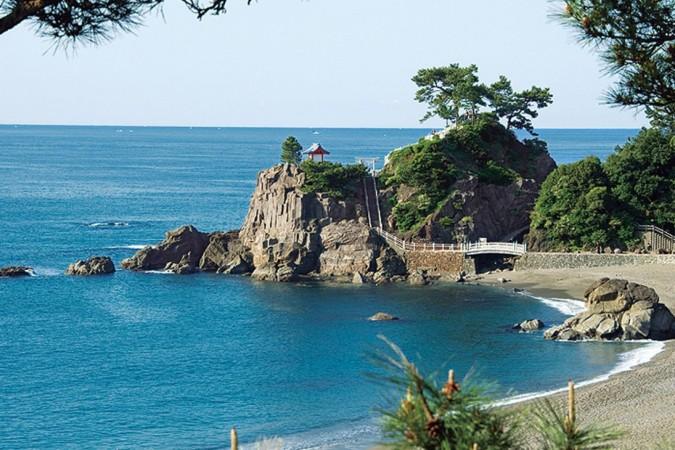
Overview of Kōchi
History & Culture Influence
The rich history of Kōchi Prefecture has influenced its own culture and customs. As the birthplace of the famous samurai, Sakamoto Ryoma, Kōchi played a pivotal role in Japan's modernization during the Meiji Restoration. The prefecture's rich history is reflected in its well-preserved castles, temples, and shrines. Kōchi Castle, a national asset, is a reminder of the area's feudal past and rich cultural heritage. Nearby, the Chikurin-Ji Temple, founded in the 8th century, provides a serene setting with its lush gardens and ancient architecture. These historical sites, combined with traditional arts and crafts like Tosa Washi paper and pottery, highlight Kōchi’s deep cultural roots.
Interaction with The Locals
Kōchi Prefecture has a population of approximately 700,000 residents. The citizens of Kōchi are known for their warm hospitality and friendly nature. The community is closely knit, with a rich cultural heritage that they proudly share with visitors. The locals, including descendants of samurai and farmers, have a deep connection to their land and traditions, which has been contributing to the unique charm and welcoming atmosphere of this wonderful land.
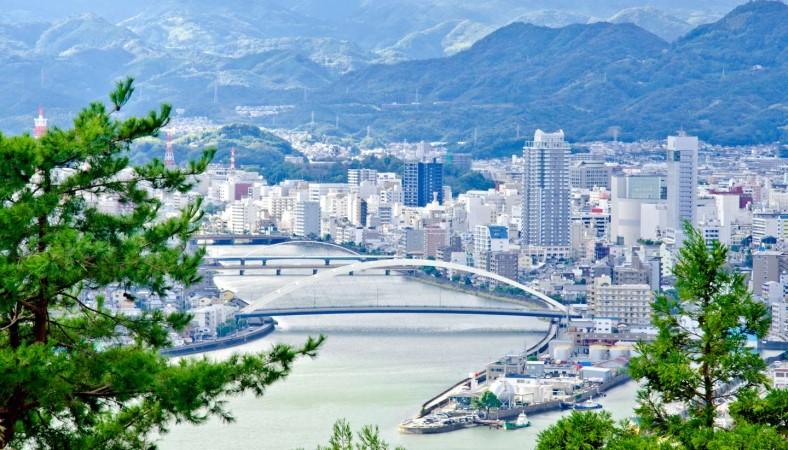
Kōchi Prefecture, Japan - © Japan Tourism
Top Attractions in Kōchi
These must-visit sites, including natural wonders and historical sites, make Kōchi a vibrant and diverse destination that promises unforgettable experiences for all who visit.
Natural Wonders in Kōchi
- Shimanto River: A bustling food market that is a paradise for food lovers, Hirome Market features a wide variety of local dishes and fresh produce. Its crystal-clear waters and untouched nature make it a haven for outdoor enthusiasts.
- Katsurahama Beach: Known for its stunning coastline and the famous statue of Sakamoto Ryoma, Katsurahama Beach offers breathtaking views and a peaceful ambiance. It’s a great spot for relaxing and soaking in the beauty of the Pacific Ocean.
- Cape Ashizuri: This cape provides dramatic cliffs and panoramic ocean views, making it ideal for hiking and photography. The Cape Ashizuri Observatory offers a stunning vantage point to admire the surrounding seascape.
Historical Sites in Kōchi
- Kōchi Castle: A symbol of the prefecture, Kōchi Castle is a must-visit for history enthusiasts. The castle grounds and museum provide insights into the Edo period and the lives of samurai warriors. Its well-preserved structure allows visitors to step back in time.
- Chikurin-Ji Temple: Part of the Shikoku Pilgrimage, Chikurin-Ji Temple offers tranquility and spiritual solace. Established in the eighth century, the temple offers tourists a tranquil haven with its old architecture and verdant surroundings.
- Tosa Shrine: A significant religious site, Tosa Shrine is dedicated to the deity of war and agriculture. The shrine's traditional architecture and peaceful surroundings provide a glimpse into Kōchi's spiritual heritage.
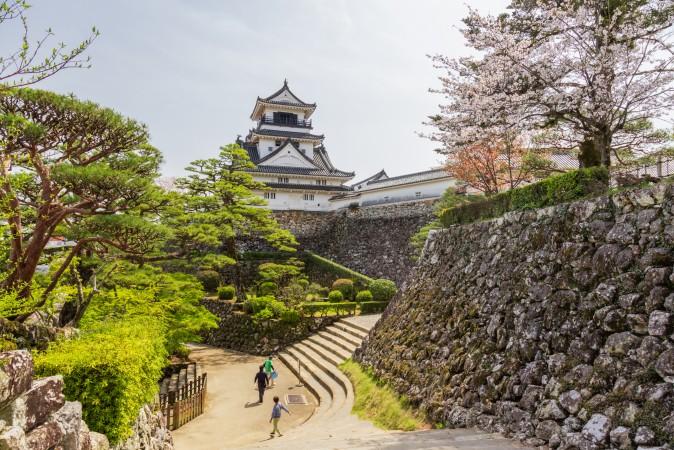
Kōchi Castle - © Japan Tourism
Must-Try Dishes in Kōchi
- Katsuo no Tataki: This iconic dish features lightly seared bonito (katsuo) with a crispy exterior and a tender, raw center. Served with a tangy soy-based sauce and garnished with green onions, garlic, and ginger, it's a true taste of Kōchi's seafood.
- Sawachi Ryori: A traditional Tosa-style banquet dish, Sawachi Ryori offers an assortment of seasonal seafood, vegetables, and meats arranged beautifully on a large platter.
- Yuzu-Based Dishes: Kōchi is famous for its yuzu citrus fruit, which is used in a variety of dishes, from refreshing salads to tangy dressings and desserts. Don’t miss trying yuzu-flavored sweets or beverages for a unique taste of Kōchi.
- Kōchi Ramen: Known for its rich, flavorful broth and tender noodles, Kōchi Ramen often features local ingredients such as pork and seafood. It’s a comforting and hearty dish that reflects the region's culinary creativity.
- Kakiage: This is a type of tempura made with a mix of sliced vegetables and seafood, lightly battered and deep-fried. It’s often served as a side dish or topping for noodles, adding a crunchy texture and savory flavor.
- Tosa Wasabi: Kōchi is known for its high-quality wasabi, and trying fresh Tosa wasabi, often served with sushi or sashimi, is a must. Its spicy kick and fresh flavor are a highlight of Kōchi’s local cuisine.
- Yama-imo (Mountain Yam) Dishes: Yama-imo is a type of mountain yam that is often grated and used in various dishes, including soups and sauces. Its unique texture and subtle flavor make it a distinctive component of Kōchi's culinary offerings.
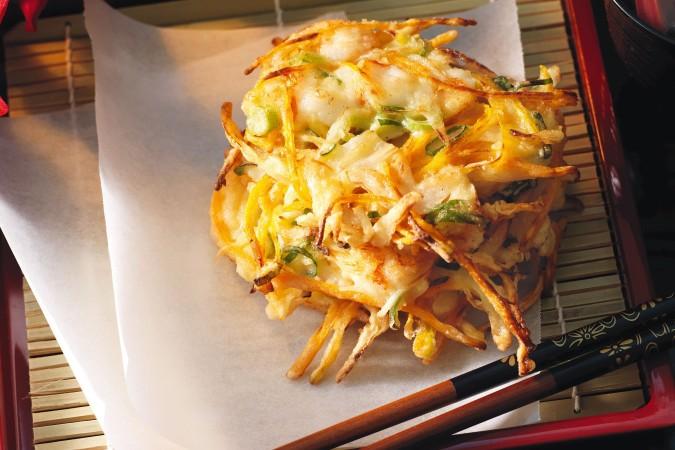
Kakiage - © Taste
Festivals & Local Celebrations
Yosakoi Festival
Held annually in August, the Yosakoi Festival is one of Kōchi's most famous and lively events. This energetic festival features colorful dance performances by groups from across Japan, each showcasing their unique choreography to upbeat, original music. The streets of Kōchi-shi come alive with vibrant costumes, rhythmic beats, and enthusiastic participants. The festival attracts thousands of visitors and locals, creating a festive atmosphere that is both exciting and culturally rich.
Tosa no Kuni no Matsuri
Celebrated in late August, the Tosa no Kuni no Matsuri (Festival of Tosa Country) is a grand celebration of Kōchi’s history and culture. This celebration showcases the historical and cultural legacy of the area via traditional dance, music, and parades. Performances of Tosa’s traditional arts, such as drum dances and folk songs, provide visitors with an immersive experience of Kōchi’s cultural practices. The festival also features stalls selling local crafts and foods, offering a taste of Kōchi’s artisan traditions.
Niyodo Festival
Taking place in early summer, the Niyodo Festival celebrates the beauty and significance of the Niyodo River, known for its crystal-clear waters. This festival combines natural beauty with cultural activities, including river floats decorated with lanterns, traditional music performances, and local food stalls. The clear waters of the Niyodo River serve as a picturesque backdrop for the festivities, creating a serene and picturesque setting that highlights the region’s natural splendor.
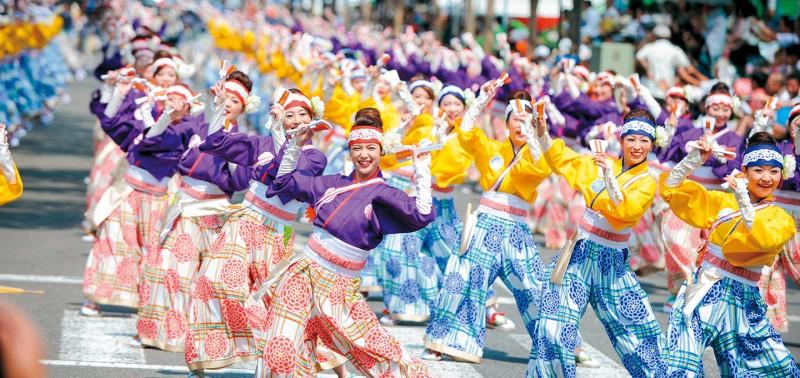
Yosakoi Festival - © Japan Tourism
What to Do in Kōchi
- Shimanto River Cruises: Paddle along the pristine waters of the Shimanto River, known for its clarity and natural beauty. Enjoy activities such as kayaking, fishing, or a scenic boat ride to immerse yourself in the serene landscape.
- Hiking Cape Ashizuri: Discover the rugged coastline and breathtaking ocean views at Cape Ashizuri. Hike along trails that offer stunning vistas of the Pacific, and capture memorable photos of the dramatic cliffs and coastal scenery.
- Visit Kōchi Castle: Step back in time at Kōchi Castle, a well-preserved symbol of the region’s samurai history. Explore the castle grounds, tour the museum, and enjoy panoramic views of Kōchi from the top.
- Visit Chikurin-Ji Temple: Find tranquility at Chikurin-Ji Temple, a historic site part of the Shikoku Pilgrimage. Wander through its peaceful gardens and admire the ancient architecture that dates back to the 8th century.
- Hirome Market Food Tours: Savor a variety of local dishes at Hirome Market, a bustling food market offering fresh produce and unique Japanese snacks. It's a fantastic location to savor regional cuisine and learn about Kōchi's culinary traditions.
- Katsurahama Beach Coastal Retreat: Spend a day unwinding at Katsurahama Beach, known for its beautiful coastline and iconic statue of Sakamoto Ryoma. Enjoy a leisurely walk along the beach, take in the ocean views, or simply relax and soak up the sun.
- Experience Japanese Tea Ceremony: Immerse yourself in Japanese culture by taking part in a traditional tea ceremony. Experience the art of tea preparation and appreciate the serene ritual that embodies Japanese hospitality.
Want to know about Hitachi? Check out our insights here and see why it's worth a visit.
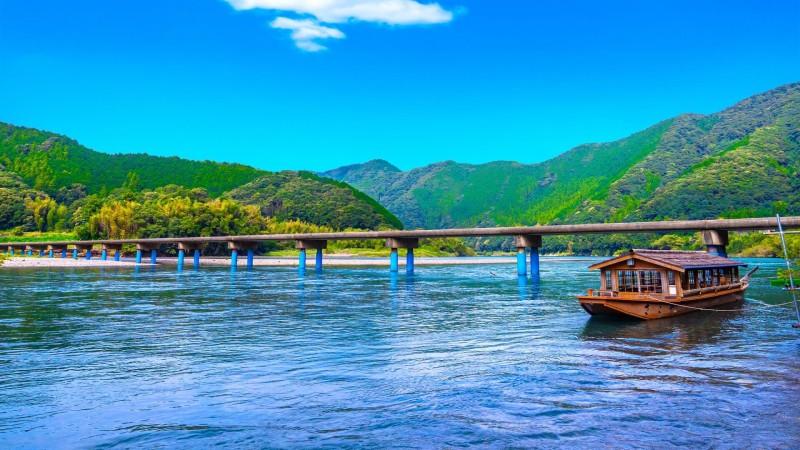
Shimanto River Cruises - © Japan Tourism
Shopping in Kōchi
- Hirome Market: This lively market is a must-visit for food enthusiasts. Hirome Market features an array of local dishes, fresh produce, and Japanese snacks. It’s a vibrant place to taste Kōchi’s culinary delights and pick up local specialties.
- Sunday Market: One of Japan’s oldest street markets, the Sunday Market is the perfect spot to explore a diverse range of goods. From fresh vegetables to handmade crafts and unique souvenirs, this bustling market offers a glimpse into daily life and local craftsmanship.
- Tosa Washi Paper Shops: Discover the traditional craft of Tosa Washi paper by visiting local shops specializing in this unique artisanal product. Tosa Washi is renowned for its quality and craftsmanship, making it a great place to find beautiful paper goods and stationery.
- Local Pottery Shops: Explore Kōchi’s pottery scene by visiting shops that showcase Tosa pottery. These stores offer a range of handcrafted ceramics, from functional tableware to decorative pieces, reflecting the region’s rich pottery traditions.
Weather in Kōchi: Best Time to Visit
- Spring in Kōchi: In Kōchi, springtime brings comfortable temperatures between 10°C and 20°C (50°F and 68°F). This is an ideal time to visit, as the weather is comfortable, and the cherry blossoms in various parks and gardens create picturesque scenery.
- Summer in Kōchi: Summer is warm and humid, with temperatures often reaching 25°C to 35°C (77°F to 95°F). The season also brings heavy rainfall, especially in June and July. Despite the heat, summer is a vibrant time for festivals, including the Yosakoi Festival, which offers a chance to experience local culture in full swing.
- Autumn in Kōchi: Autumn brings with it lower temperatures, from 15°C to 25°C (59°F to 77°F). This is another great time to visit Kōchi, as the weather is comfortable, and the autumn foliage provides stunning natural beauty. It’s an excellent season for outdoor activities and exploring historical sites.
- Winter in Kōchi: Winter is generally mild, with temperatures ranging from 5°C to 15°C (41°F to 59°F). While it can be cooler, it is still relatively mild compared to other regions in Japan. Winter is a quieter time for tourism, making it ideal for those seeking a more serene experience.
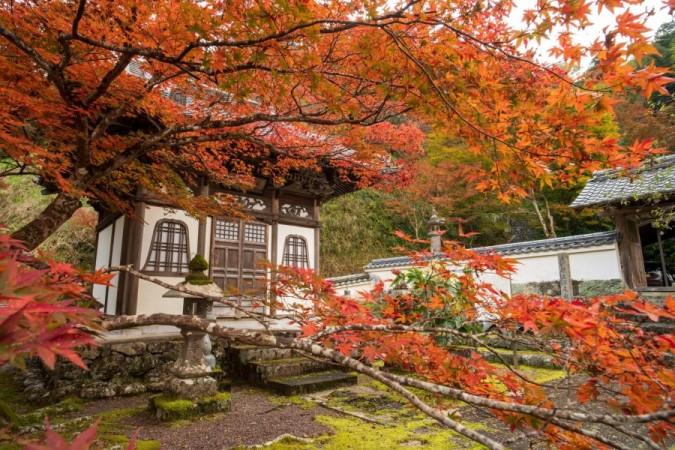
Autumn in Kōchi - © Shikoku Tourism
Culture Etiquette in Kōchi
- Respect for Local Festivals: During festivals like the Yosakoi Festival, it's important to be mindful of the participants and their performances. Participation in some aspects of the festival, such as traditional dance, is often welcomed, but always follows the guidance of local organizers.
- Use of Onsen: If you visit an onsen (hot spring bath), make sure to follow the proper etiquette. Thoroughly wash and rinse your body before entering the communal baths. Swimwear is not permitted, and it's customary to keep your hair tied up and avoid splashing.
- Shoes Off Indoors: In Kōchi, as throughout Japan, removing your shoes when entering homes, traditional accommodations, or certain establishments is standard. Look for a designated area for shoes and use indoor slippers if provided.
- Gift Giving: When visiting someone’s home or a business meeting, it’s polite to bring a small gift or souvenir from your hometown. This gesture, known as “omiyage,” is appreciated and reflects thoughtfulness.
- Chopstick Etiquette: Avoid pointing with or sticking chopsticks upright in rice, as this mimics funeral practices. When not using chopsticks, place them neatly on the provided rest, and avoid crossing them on your plate.
- Handling Money: When paying at shops or restaurants, use both hands to give and receive money. This gesture shows respect and is considered polite in Japanese culture.
- Respect for Nature: Kōchi’s natural beauty is a source of pride, so practice eco-friendly habits while visiting. Avoid littering, respect designated trails, and follow local guidelines for wildlife protection. This helps preserve the region’s pristine environment for future generations.
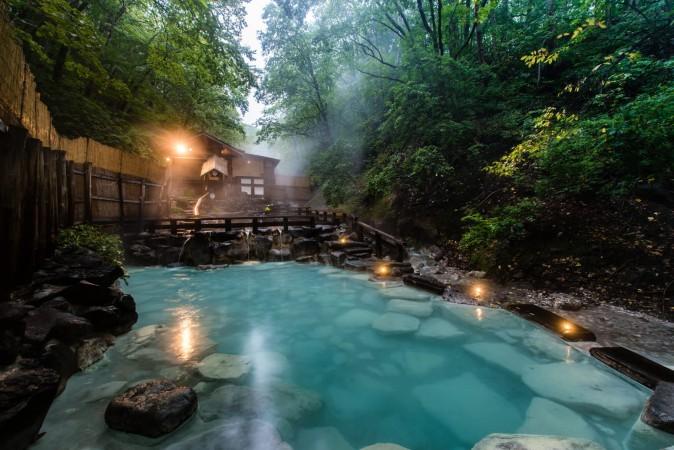
Onsen heaven for a great wellness retreat - © Japan Tourism
Essential Travel Information
Getting Around Kōchi
- Trains: Kōchi is served by the JR Shikoku railway network, which connects major cities and towns within the prefecture. Trains are a convenient option for longer journeys within the region.
- Buses: Local and intercity buses provide access to various attractions and smaller towns. Kōchi Prefecture’s bus network is extensive, making it easy to reach destinations that are not served by trains.
- Taxis: Taxis are readily available in Kōchi and nearby urban areas. They offer a flexible and convenient way to travel, especially if you have a specific destination or are traveling with luggage.
- Rental Cars: Renting a car provides freedom to explore Kōchi’s scenic countryside and remote attractions at your own pace.
- Bicycles: For a more eco-friendly and leisurely option, consider renting a bicycle so that you can enjoy the local scenery and attractions at a relaxed pace.
- Ferries: Ferries connect Kōchi to nearby islands and coastal areas, offering a scenic and enjoyable way to travel.
ATM & Banking Services
Accessing banking services and ATMs in Kōchi Prefecture is easy, with numerous options available for travelers. ATMs are widely accessible at convenience stores, shopping centers, and banks throughout the area. Banks offer essential services like currency exchange and cash withdrawals, with branches also located in urban centers. While most major hotels, restaurants, and shops accept credit cards, it’s a good idea to carry some cash for smaller establishments and rural areas.
Want to know about Nara, another famous region in Japan? Check out our insights here and see why it's worth a visit.
Where to Stay in Kōchi
- Hotels: Kōchi offers a range of hotels, from luxury establishments to budget-friendly options. Many hotels provide comfortable amenities, including Wi-Fi, restaurants, and concierge services.
- Ryokan: Staying at a ryokan is a great way to experience true Japanese hospitality. These guesthouses offer tatami-matted rooms, futon bedding, and often feature onsen (hot springs) for a relaxing stay.
- Minpaku: For a more personalized experience, consider minpaku (private lodgings). These offer a special chance to see Kōchi from the viewpoint of locals and are frequently operated by local families.
- Hostels: Budget travelers will find a selection of hostels in Kōchi. Hostels offer affordable rates and communal facilities, making them a great option for backpackers and solo travelers.
- Camping: For outdoor enthusiasts, camping sites are available in scenic locations such as near the Shimanto River and Cape Ashizuri. These sites offer a chance to enjoy nature while still having access to basic amenities.
Articles for you

Explore Yala National Park - Sri Lanka Travel, Asia
Tucked away in Sri Lanka’s southeastern corner, Yala National Park is where wild nature meets deep tradition. Known worldwide for its leopard population, the park is also home to elephants, sloth bears, crocodiles, and hundreds of bird species. Beyond wildlife, Yala opens doors to a cultural landscape dotted with ancient temples, Buddhist ruins, and coastal villages. For travelers seeking more than just a safari, Yala offers a chance to explore eco-tourism, local communities, and sacred heritage sites.
Population: The Yala National Park area doesn’t have a human population.
Economy: The economy around Yala National Park thrives on a blend of eco-tourism, agriculture, and local services. Safari tours, eco-lodges, and cultural experiences drive steady income for nearby towns like Tissamaharama and Kataragama, supporting thousands of families.
Landmarks: Famous for Block I of Yala and wildlife encounters, including elephants, sloth bears, crocodiles, and exotic bird species.

Explore Galle - Sri Lanka Travel, Asia
Nestled on Sri Lanka’s southern coastline, Galle is a vibrant city where history meets the sea. Its cobbled streets, colonial architecture, and serene beaches make it a must-visit destination for travelers seeking a blend of culture, adventure, and relaxation. A UNESCO World Heritage site, Galle captivates visitors with its Dutch Fort, bustling markets, and friendly locals. Whether you’re exploring the ramparts at sunset or savoring fresh seafood by the shore, Galle promises an unforgettable journey into Sri Lanka’s heritage.
Population: Approximately 113,000 in 2023.
Economy: Galle’s economy thrives on tourism, trade, and fisheries. The city’s historic fort, colonial architecture, and coastal charm draw thousands of international visitors each year, making tourism its main economic driver. Fishing remains vital for local livelihoods, supplying fresh seafood across the region.
Landmarks: Famous for the Galle Fort, Dutch Reformed Church & Maritime Museum, and Unawatuna Beach.

Explore Bentota - Sri Lanka Travel, Asia
Nestled along Sri Lanka’s southwestern coast, Bentota is a tropical paradise that blends golden beaches, vibrant culture, and thrilling adventures. Famous for its calm waters, luxury resorts, and scenic river estuary, Bentota has become a top destination for travelers seeking both relaxation and authentic experiences. From serene beach walks at sunrise to adrenaline-pumping water sports, this coastal town offers a perfect balance of leisure and exploration. With its proximity to Colombo and Galle, Bentota is easy to reach, making it an ideal stop for both short escapes and extended holidays.
Population: Approximately 37,000 in 2023.
Economy: Bentota’s economy thrives mainly on tourism, which drives local businesses such as hotels, restaurants, and wellness retreats. The town also benefits from fishing, coconut cultivation, and handicrafts like wood carving and batik textiles. Many residents rely on the growing demand for water sports and Ayurvedic treatments, making tourism the backbone of both income and employment in the area.
Landmarks: Famous for Bentota Beach, Bentota River Safari, and Kande Vihara Temple.

Explore Mirissa - Sri Lanka Travel, Asia
Mirissa is a charming coastal town on Sri Lanka’s southern shoreline. Known for its golden beaches, turquoise waters, and vibrant marine life, it has become a must-visit stop for travelers exploring the island. Many come for whale watching, surfing, and sunset views at Coconut Tree Hill, but Mirissa offers much more than postcard beauty. The fishing boats you see anchored by the bay carry generations of stories. Local traditions, delicious cuisine, and a laid-back rhythm of life shape every visitor’s experience.
Population: Approximately 4,700 in 2023.
Economy: Mirissa’s economy is largely shaped by its coastal location. Fishing has long been the backbone of local livelihoods, with generations relying on the Indian Ocean for income. In recent decades, tourism has become the main driver of growth, thanks to whale watching, surfing, and beachside hospitality.
Landmarks: Famous for Mirissa Beach, Coconut Tree Hill, and Parrot Rock Bridge.

Explore Nuwara Eliya - Sri Lanka Travel, Asia
Tucked away in the Central Highlands of Sri Lanka, Nuwara Eliya is often called “Little England”. With its rolling tea plantations, cool misty mornings, and colonial charm, this mountain town feels like a step into another world. Travelers come here to breathe fresh air, walk through flower gardens, sip the finest Ceylon Tea, and enjoy a pace of life far from the island’s busy cities. Whether you’re drawn by scenic landscapes, heritage architecture, or the warmth of its people, Nuwara Eliya is a destination that blends nature, culture, and history in perfect harmony.
Population: Approximately 781,000 in 2023.
Economy: Nuwara Eliya’s economy thrives mainly on tea production, as it sits in the heart of Sri Lanka’s central highlands, famous worldwide for Ceylon Tea. The city also benefits from a growing tourism industry, attracting visitors with its colonial charm, cool climate, and scenic landscapes.
Landmarks: Famous for Gregory Lake, Hakgala Botanical Garden, and Victoria Park.

Explore Sukau - Malaysia Travel, Asia
Nestled on the banks of the Kinabatangan River in Sabah, Malaysian Borneo, Sukau is a destination where wildlife, culture, and conservation come together. Known as one of Asia’s top spots for river safaris and eco-tourism, this quiet village offers a front-row seat to encounters with Bornean orangutans, pygmy elephants, proboscis monkeys, and exotic birdlife.
Population: Approximately 1,400 in 2019.
Economy: Sukau’s economy is shaped by its riverine location and natural resources. Traditionally, the Orang Sungai community relied on fishing, small-scale farming, and forest gathering for their livelihood. Today, the village has shifted toward eco-tourism, with river cruises, jungle trekking, and homestays providing income.
Landmarks: Famous for the Kinabatangan River cruises, Gomantong Caves, and Ox-bow lakes and wetlands.
